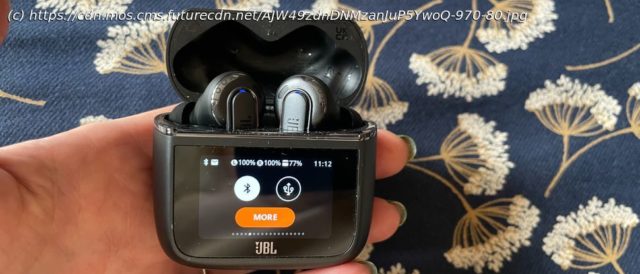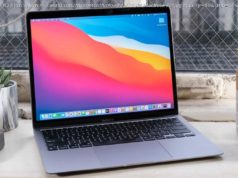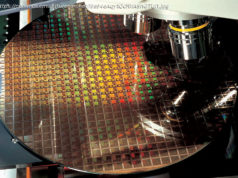Tour Pro 3 have very good audio and a screen on the case – problem is, the cheaper Live Beam 3 do too…
JBL Tour Pro 3: Two-minute review
Sometimes, we can become victims of our own success. Are the new JBL Tour Pro 3 some of the best noise-cancelling earbuds I’ve ever tested? They’re emphatically the most feature-packed I’ve ever used, bar none, and that is wholly commendable. A quick scroll through the on-screen menu options is testament to that. These flagship earbuds do so much; to your music, to the voice of anyone you talk to during calls, to the ambient sounds around you, to your in-game experience, to broadcast audio to your friends – I could go on (I will go on, don’t worry).
So why do you sense a ‘but’ coming? Well, since the arrival of the January 2023-issue JBL Tour Pro 2 upon which this third-gen flagship set are built, JBL has offered much of its once-flagship tech to the cheaper Live 3 earbuds (which come in three flavors: ‘toothbrush-head’ Beam, ‘open-ear-ish’ Flex and ‘no-tail’ Buds propositions) including that super-impressive smart case. Which is good, right?
Yes, except it means that justifying the price hike from $199.95 / £179.99 for the excellent JBL Live Beam 3 up to $299.99 / £279.99 for the Tour Pro 3 isn’t easy. And making a case for buying the flagship set only becomes harder when you discover that the more budget set is now available for a bit less; a quick UK scan proved you can buy the Live Beam 3 for £149.99 – and I’d suggest that they’re amazing value for that money.
So what are the upgrades here? Let’s not mess around, I’ll tell you right now: you now get two color choices – black and a new ‘latte’ caramel-type finish – and the screen is 30% larger than the older Tour. Also the case a little smaller than that of the Tour Pro 2, but it’s still bigger than the Live Beam 3.
The headline-grabber is that this case is now a transmitter (see the Bowers & Wilkins Pi8, Jabra Elite 10 Gen 2 or LG Tone Free T90S for similar) meaning that with the included 3.5mm-to-USB-C cable, you can hook up to the in-flight movie system in your airplane seat (say) and broadcast the audio to your buds – but like B&W’s option, it’ll do it in high-quality audio, this time using LE Audio and the LC3 codec.
The JBL Tour Pro 3’s case is also one of the first registered Auracast source devices in portable audio, which means anyone in the vicinity with Auracast-enabled headphones (there aren’t too many about right now, but they’re coming) could also join to hear the sound being transmitted, and you can add a password if you don’t want random listeners hooking up to your broadcast.
JBL’s Spatial Audio 360 is onboard too, which now includes head-tracked, device-agnostic immersive audio helped by an updated algorithm; L/R balance optimization; 12 EQ bands to tailor things sonically and JBL’s new Personi-Fi 3.0 update. Personi-Fi helps to personalize the sound to your liking, creating a sound profile based on your hearing by giving you an otoacoustic test of sorts (more on this later).
Under the driver housing there’s now a hybrid 10.2mm cellulose dynamic driver coupled with a 5.1mm x 2.8mm balanced armature setup, which splits the audio signal so different frequencies go to their optimized drivers. Codec support is also better: in addition to SBC and AAC, hi-res LDAC joins the party when listening wirelessly – great news for Sony Xperia or other Android phone owners.
JBL also claims its new AI algorithm means the company’s True Adaptive Noise Cancellation 2.0 with ‘smart calibration’ is actually able to tackle what it calls ‘incident noises’ – think unusual, one-off sounds rather than constant jet engine cabin noise.
If that sounds like a lot for it to offer over the Live Beam 3, it is and it isn’t. The difference in screen size is negligible to the eye and for me the case is a touch on the bulky side to be truly pocketable. It’ll come down to whether you want that head-tracked spatial audio (which is very good indeed), the transmitter in the case, and/or an Auracast source device. If you’re not worried about those last two perks, I cannot build a compelling case for paying the significant price hike over the Live Beam 3.
Add to this the fact that for me, the Tour Pro 3 earbuds themselves are on the large side (despite the addition of foam tips as well as silicone, I struggled to get them to stay put in my ears) plus the fact that, like the cheaper set, you still need to make a compromise in terms of on-ear control options and you’ll see why I can’t give them the full five stars – or the 4.5-star verdict their cheaper siblings get – despite the plethora of perks.JBL Tour Pro 3 review: Price & release date
Unveiled on August 21, 2024
Priced $299.95 / £279.99 / (approx.) AU$545
OK, so the JBL Tour Pro 3 are not cheap. What to say about the asking price? Well, the aforementioned flagship Bowers & Wilkins earbuds (which coincidentally launched on the same day and also offer a case transmission feature – but no spatial audio processing) are even more expensive, at $399 / £349 / AU$699.
Elsewhere, Bose’s QuietComfort Ultra Earbuds also come in at $299 / £299 / AU$449; Technics’ excellent EAH-AZ80 are $299 / £259 / AU$499 as well, and the Final ZE8000 MK2 are $399 / £289 (around AU$609), where available.
It’s worth noting that the older Tour Pro 2 launched in January 2023 at MSRPs of $249.95 / £220 / AU$350, so there’s been a $50 / £50 price hike this time around. Given the upgraded specs listed, you could say that the new asking fee doesn’t seem unreasonable. On the other hand, I really think the small matter of the splendid $199.95 / £179.99 / AU$249 JBL Live Beam 3 remains a thorn in this Pro set’s side…JBL Tour Pro 3 review: SpecsJBL Tour Pro 3 review: Features
Excellent spatial audio with head-tracking
Case retransmission feature adds value
Noise cancellation is good rather than excellent
Before I launch headfirst into what the Tour Pro 3 do incredibly well, if you want Bose QuietComfort Ultra Earbuds or AirPods Pro 2 levels of active noise cancellation, you don’t quite get it from JBL Tour Pro 3. When I deploy ANC (and here you can select from a seven-step slider or pick ‘Adaptive ANC’ to have JBL’s algorithm sort it) I do feel the noise floor drop, but that cocooned, bubble-of-silence feeling is never quite achieved.
This may be in part to the fit and seal I was personally able to get – despite the in-app ‘Check my best fit’ test telling me I’d got it just fine and toggling ‘Auto compensation’ on, in the ANC customization tab (which promises to check wearing and ear canal status to adjust ANC in real time) the Tour Pro 3 never felt incredibly secure in my ears, and this does contribute to sound leakage and passive isolation.
However fervent the claims JBL makes about its souped-up True Adaptive Noise Cancellation 2.0 with ‘smart calibration’ (the company says it does a good job of nixing ‘incident noises’ as well as regular low-level constants), I never quite feel it. Don’t get me wrong: there is a marked difference to the level of extraneous noise that seeps in, but it isn’t wholly cancelled, and the Tour Pro 3 never perform as well as the options listed above in this area.
Now, the really very good bits: spatial audio. Oh, it’s good. When I cue up Rod Stewart’s Handbags & Gladrags, the drums sit over on my right as flutes join in, somewhere behind my brainstem.
Home
United States
USA — software JBL Tour Pro 3 review: 'feature-packed' is an understatement, but these earbuds'...






